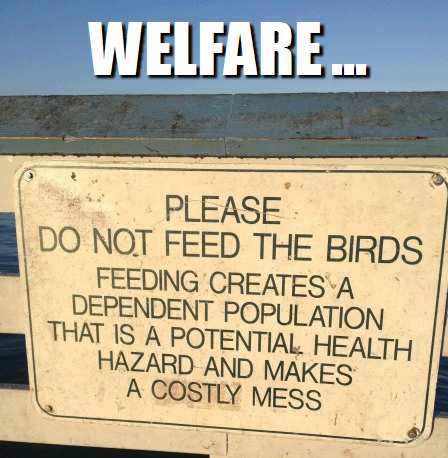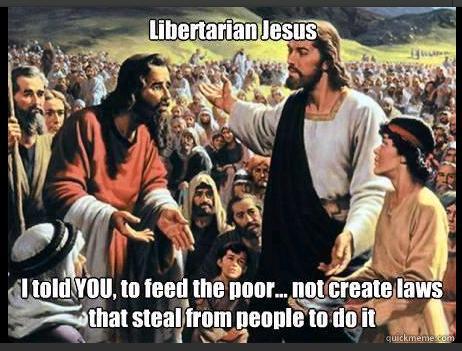
Hamilton Homeless. Natural Law, Loving Thy Neighbour as thyself, The Basis for Religious liberty and peaceful Co existence.

“If it be possible, as much as lieth in you, live peaceably with all men.”
The Christian Libertarian Principle. St Paul. Romans 12:18
I have taken my time to get around to writing this post as I have had other things to deal with, yet circumstances have now conspired to make room in my chaotic existence to take care of this very interesting and important monologue.
My regular readers will be familiar with the fact that I have been in communication with a New charitable trust which has started operating in my home town of Hamilton in the Waikato Region of New Zealand.
It’s name is ‘Hamilton homeless’ and was started when a woman by the name of Claire Chapman listened to her brother whom was upset by the fact that he had seen homeless people in the CBD eating out of trash cans.
Being a Religious woman ( a Mormon), She decided that she would do something about this…. And started bringing soup and bread into town and distributing it to the homeless.
She was overwhelmed with how many people turned up on the first night, and so she came back again and even more people turned up.
This was a revelation to her… she realized there was a great need for this charitable work, and with the support of her husband Kyle, and some of her friends… they decided to make this a regular and ongoing activity.
That’s when the Hamilton City Council came along and tried to drive them out of the City.
(Read about that >>>here<<<
They said they had received complaints from business people who were unhappy that ‘their CBD’ was becoming a magnet for the dregs of society, that the Free food was making a mess, and that it was ‘unlawful’ to engage in such activities without a permit, and that if they continued to do so the would face arrest.
Yet Claire would not be Bullied.
She had met many of these unfortunate people… sometimes whole families whom were destitute and hungry, and she was determined to help them even in the face of these threats.
The City council tried many devious ways to move them out of the CBD, suggesting ‘alternative’ areas where they would ‘prefer’ the Rabble to congregate… yet this area was far too far away from where the action is…
Anyway the upshot of all this was that the Local papers caught wind of this confrontation with the City Council and so via the Papers, Hamiltonians of Good will became aware of the Charitable deeds of this fledgling enterprise and were inspired to rally from all quarters, and one and all were welcomed with open arms.

Claire.
Having now laid down the basic circumstances for Eternal vigilance readers as to how Hamilton Homeless arose, I would now like to get down to the central reason I am writing this post… the almost universally apprehended Ideal of ‘Loving thy Neighbor as thyself’ , and how such a widely accepted and virtually self evident truth can become the basis for not only peaceful co existence, but also for voluntary co-operation between a great disparity of peoples from all walks of life.
I want to point out what great hope this sort of Universal value has for the attainment of a Free, and peaceful society.
‘The Idea that we Ought to love our neighbors as ourselves’ is so self evident that it may even be described as a ‘Natural Law’.
It is my belief that Christ himself made many appeals to such ‘Natural laws’ because he knew that even among the uneducated… common folk, that he would find understanding… that the vast majority would be able to grasp the underlying rationale, and would thereby concede to it’s righteousness.
And this is such a basic rationale that once it has been articulated, It stands on it’s own merit. Ie It’s like Geometry… the Rules of a square… the rules of a Circle…. Are understood and accepted virtually universally… irrespective of peoples personal beliefs.
So in *this sense* the ‘ought-ness’ or Law to ‘Love thy neighbor as thyself’ may be said to be a secular truth, and is not only accepted by the followers of Christ, but also by many peoples of a vast diversity of religious faiths and political persuasions… including Atheists.
Despite many differences of opinions on many other points, the rightness of helping the poor makes as much sense to many Christians as it does to many Atheists, Jews, Muslims, Hindus, etc.
Thus Charitable compassion for the poor and needy can be a point of rally for any individual with a compassionate heart, to co operate together with others for the sake of this noble cause… and realizing this my friends ought to fill your hearts with hope that Libertarian Good will *Can* bring peaceful co-existence!
I sincerely believe that a small collection of these virtually universally accepted values can form the basis for a Social contract of Libertarian Tolerance, co-habitation, and peace.
A Free and peaceful society.
Theses values form a basis for universal voluntary consent to a
‘secular society’… which by the way is *not* an atheist society… Militant atheists have pulled a great swindle by claiming ‘secular truths’ are ‘atheist truths’ when in fact they are simply ‘Truths’ which stand upon their own merit…. Neither atheist or theist…. Eg a Square is not an atheist or a theist construct… it is simply a geometrical construct… accepted by all men of reason irrespective of their personal religious persuasions.
And so I beseech Christians and other religious peoples not to equate or surrender ‘secular truths’ as godless, but to appreciate their Neutrality.
And it is this Neutrality of the formulation of the ‘Natural laws’ which imbues them with the glorious potential to become the foundation of a truly Free and equal society.
You see to have a free and equal society does not require agreement on all things… only agreement on a minimum of Basic essentials… everything else falling into the domain of Tolerance, and the liberty of the individual to follow their own consciences and pursue their own happiness.
Differences may be rationally argued via free speech and freedom of association… with ultimately a policy of ‘Live and let live’ as long as the few basic articles of the social contract are honored by all parties.
It forms an overlapping consensus.

Having said this let me now expound how that long winded spiel correlates with Hamilton homeless, and the Menagerie of Individuals whom having seen for themselves the virtue of what Clair and Kyle were doing, decided to volunteer their time, and money to help feed the Homeless of Hamilton.
I cant give a full account of variety of charitable souls whom showed up.
They truly were from all walks of life.
Most of them belonging to Political or religious associations of which I personally disagree with on many accounts yet still when it comes to volunteering their time and energy to help the needy… I salute them!
For starters there was Claire and Kyle, and some of their personal friends…. They are Mormons.
Then there were some who had once upon a time lived in poverty themselves, and had received help… and having now recovered and are living more comfortably, they simply want to ‘give something Back’.
Then you had Yours truly… a Christian Libertarian whom has been looking for both fellowship, and a worthy Charitable cause to volunteer myself, out of Love and respect for God, and my fellow human beings… in need.
Then there was at least one Maori Radical political activist with whom I had crossed swords on several occasions over the Years.
She tearfully expressed her sadness that her own ‘Artist’ brother had lived ‘a gypsy life’ and had recently died.
Despite any political differences of opinion her and I have, I would never deny the truth that she has a compassionate desire to help the needy in her community, and I have read reports of her caring deeds at the coal face already.
What is amazing about this voluntary association is that it has the power to unite such disparate personalities in a bond humanitarian good will, and as long as the leadership keep things simple and focused, … this Bond should remain firm… and could even be the genesis of better understanding and relations on a greater sphere of values and ideals held individually.
This is an awesome concrete reality which demonstrates the potential for Hope in humanity which is to be found in Freedom and voluntary association!
Think about that.
In this capacity, Hamilton homeless embodies some of the Highest *Libertarian ideals!*
Anyway you may think that I have covered enough already for two blogposts…. I sympathise… yet still I have yet one last Bunker buster Bomb to deliver… one more volunteer to describe!
I will do my best to keep this last point as short as possible.
It could cause some people to withdraw any support they were contemplating, because it stretches the boundaries for some as to how far tolerance should extend, and it challenges the Tidy little Boxes we love to create in our heads so that we can with the least effort classify various individuals with whom we meet… and pretend to ourselves that this is all a very reasonable process.
When it began to dawn on me what/ who I was dealing with… I had to take a deep breath and take a few moments to seriously think about the implications.
After a quick contemplation of the situation, I decided that I would display the same grace as I …in faith…trust my Heavenly Father has for wretched me.
Nek minute…
26-4-14 Waikato Times Front page.
‘White power activist feeds homeless’.
The organiser of a group taking donations from the public to feed Hamilton’s needy has defended the involvement of her husband – white supremacist Kyle Chapman.
Hamilton Homeless organiser Claire Chapman says there is no connection between her organisation and the white pride group, Right Wing Resistance (RWR), that Kyle Chapman is director and founder of.
“My husband, his interests aren’t my interests; however, my interests are his interests,” Chapman said.
“Kyle is helpful and feeds the homeless every night he can.”
Kyle Chapman, the former leader of the National Front, is the funding co-ordinator and organises meals on Thursday nights for Hamilton Homeless, an unregistered charity.
The contact number listed for Kyle Chapman on Hamilton Homeless’ Facebook page is also the number for the headquarters of RWR.
Read more >>>here<<<
KABLAM! You didn’t see that coming did you! :-)
When I turned up to my first Hamilton Homeless meeting I met Claire, and she introduced me to her husband Kyle, We shook hands, and I said he looked familiar and that I must have ‘seen him around’.
The meeting began and the conversations progressed about how everyone had a desire to help the needy in Hamilton.
And I was pondering where I had seen Kyle before… and then It dawned on me!
I had seen him several Times on TV fronting a Neo Nazi ‘White power’ organization!

As you can imagine that was quite an unexpected cognition!
Here was I sitting… listening to a lovely and caring woman concerned about feeding the Poor of Hamilton… a large percentage of whom are Maori, and to my right I am looking at her White power Husband to whom she has three kids!
This meeting had gotten interesting indeed, yet there and then, I had to mull over many internal dilemmas.
There must be more to this guy Kyle than what is common opinion about what white power Nationalism represents.
Was He still involved in that movement?
How close an association do I really want to have with him?… you know how it is… “Oh Tim Wikiriwhi is a traitor to Maoridom… He Hangs out with the Nazi’s”, etc.
I’m quite used to being called a traitor to my race, yet still the idea that By belonging to Hamilton Homeless I was almost certainly exposing myself to even more slander was reason to pause for contemplation!
What Tim are you going to do?
As I sat there and listened to Claire’s efforts to get food to the hungry… many of whom are of Maori ethnicity, and the heartless persecution that she was facing from the City council simply to fulfil her personal conviction that this work was what God wanted her to do, and contemplated that her husband Kyle was in full support of her trials, it dawned on me that Kyle simply *Cant* fit into that ‘Box’ conveniently labelled ‘Racist Fascist Bigot’.
I decided then and there that I would throw away *that box* (or at least not try and force Kyle to fit tidily and conveniently therein), and to make my decision about how I would proceed based upon what I was witnessing first hand… That despite his past, that Claire thought Kyle was a decent human being.
I saw that he was obviously supportive and co-active in this noble charitable work, and so I decided I would give him the benefit of the Doubt… cut him some slack… some grace…. just as I need the grace of the Lord.
When I left the meeting, I went over and shook his hand and said I knew who he was, and he said that Claire and Him wanted to keep that separate from the charity work…. And I said that was cool with me.
A week or so later the Newspapers broke the ‘front page story’… $ensational $tuff!
I chatted with Kyle at a later meeting at their home… the very day the News article hit the streets, and learned that he was still a leader of the ‘Nationalist Resistance’.
He admitted that there are Racists in the movement, yet that he himself is *Not* a racist.
*WoW!*…. Talk about challenging ones packaged assumptions!
Here at this 2nd meeting I… the Libertarian.. sat between a Maori Radical, and a Nationalist Resistance leader… discussing how they could co-operate to feed the poor!
Talk about a Mind F!
I was actually witnessing a scene which exemplifies the classic duplicity of our NZ society which has become acclimatized to making out ‘the White guy’ is a racist…. While condoning Maori separatism as a defiant act of ‘self determinism’!
For me the meeting did not progress in a direction which I had hoped… >>>see here<<< yet still it was a spectacle to behold!
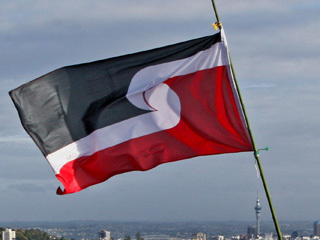
Representatives from what is assumed to be two diametrically opposed groups setting aside their differences for the sake of a common value!
Furthermore, it was a testimony to the fallaciousness of what passes in society for thinking…. The bogus Idea that Individuals may be classified and collectivizes into tidy little boxes… and judged to either be fit to participate in our society… or be Damned.
Both Kyle and Alvina (the Maori Radical) demonstrated some very ‘inconvenient truths’…. Which the Media and general public are too lazy and uncaring to contemplate… that maybe in spite of some of their ‘extreme’ views, that they still have a caring and compassionate heart when it comes to those in need… enough to set their differences aside.
In reality, how different are these two factions?
In my view they are akin… yet one side certainly gets vilified while the other is ‘Politically correct and ‘official doctrine’….
What is amazing to realize is that despite opinions as to the veracity of their political beliefs, there is still hope for peaceful co-existence between the most extreme dichotomies… if they will but appreciate that within a Libertarian framework individuals are free to hold their own beliefs and to pursue their own happiness as long as they do it privately, and respecting their neighbours Equal rights to peacefully do the same.
This is what it really means to love thy neighbour as thyself!
Ie To tolerate and accord everyone the same right to peacefully … in Freedom… hold their own opinions… even when you don’t agree with them… or like them.
You don’t want them to use political force to impose their views upon you… so likewise you ought not to lobby government to impose your views upon them.
Thus as a Libertarian who also holds strong personal religious convictions (I’m a King James Bible believing Protestant Dispensationalist) and so I personally think Mormonism is wrong, Maori Separatism is wrong, and White power is equally wrong,… as long as people pursue their own beliefs peacefully and privately…. Without lobbying the government to impose their personal beliefs upon others… then they may freely follow their own conscience, and propagate their own beliefs via civilised means.
Libertarianism is their neutral friend… not their enemy… as it embeds those few commonly held / universal values as the constitutional laws of the land, and there by leaves the greatest scope for freedom.
These few principles have the power to form the foundation for peaceful co-existence and even co-operation.
In Peace I applaud every individual whom cares enough to use their own time, money and energy to help feed Hamilton’s hungry irrespective of their other personal beliefs… including Alvina.
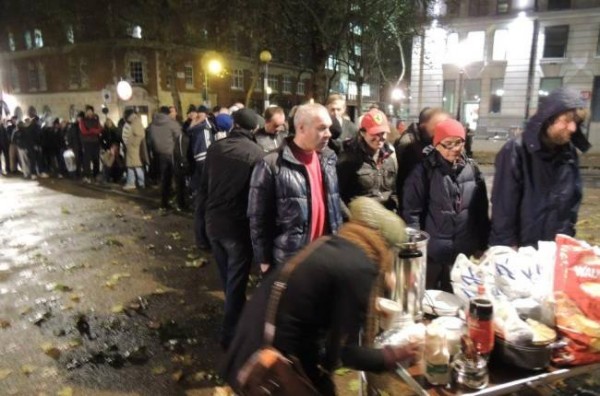
Hamilton’s Needy.
That’s enough from me for now… I’m going to post this to Eternal Vigilance.
I cant say that I know what Kyles ‘ National Resistance’ is all about.
I’ll need to do more study.
I don’t really know Kyle either… I’ll just say that It’s been a real pleasure to meet him and to talk to him, and from what I See daily from Hamilton Homeless, I congratulate him and his Wife Claire for the wonderful charity work they are doing.
He certainly does not fit into the Box which the Waikato Times tried to shove him.
He’s not a Racist.
His Good works prove this.
I dont pretend to understand how he fits in his ‘non-racism’ with his Nationalist ideas, nor do I really have to … that’s his own business.
I applaud Claire’s enlightened ‘open door’ non-partisan… non-denominational policy.
I salute them both, and intend contributing to their charity… and hope to get to know them both better.
End note: I dont know how Christians can be Racists?
It is staggering to know that Millions of Christians have failed to apply the principle of loving their neighbours *as themselves*.
How can they not appreciate the truth that in Christ there is neither Jew nor Greek, but all are one in Christ?
The Lions share of Troubles and ideological conflicts in our society and the world at large are caused by those whom want freedom for themselves, yet despise freedom for others and believe they have superior rights to everyone else.
They seek political advantage for their own Faction to oppress those other sectors of society whom they hold a prejudice against.
Most often they tend to cloak their bigotry and lust for oppression in the garb of social concern, and self-righteousness.
If only these groups could appreciate the value of Equality and freedom… voluntary association… they would realise they could have peace and security for their families… and still be free to peacefully follow their own beliefs.
And I believe the virtue of such Freedom an equality would with time work to corrode the bigotry which under pins the most extreme hate groups.
Tim Wikiriwhi.
Christian Libertarian
Hamilton New Zealand.
Update 11-5-14. Kyle Chapman Responds.
Great article.
Just one note. The white power label is a media construct. The racist label is a political and media tool created to put people in a box so that they can ignore anything the labelled person says after that. Trotsky said he made up the term “racist” to fight nationalism.
The whole thing is a scam designed to fight political groups that fight globilization. Nationalist orgs world wide do charity drives etc. Its just not reported since the media is run by globalists who hate nationalism. So they take a dishonest view of their political rivals. Using their position to spread misinformation.
The media do this with anyone who fights the agenda they follow. They also have a more simplistic reason for their lazy reporting and sensationalism. Its called employment and profit. Controversy sells. They make stories more controversial in order to make more money. They lie often to push this agenda. Not many people around now who havn’t seen this for themselves either through personal experiences or seen it done to someone they know. Study the truth. Don’t believe fairfax and other global media companies. They are all about money and spreading global agendas.
Bad Apples. Heretics and Infidels.

One of the chief reasons I am opposed to the Death penalty is firstly Human Justice systems suffer the ‘Human factor’ to the greatest degree, and are notorious for passing Bad judgements against innocent people, and secondly because History proves that Satan’s Minions love to exercise this power to kill off the Righteous Free thinkers whom refuse to Bow down before them.
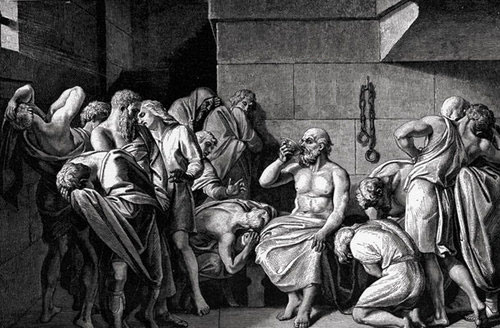
Socrates scentenced to death via Hemlock.

White Rose. Hans and Sophie Scholl – The Final Days: True Story of Anti-Nazi Activist
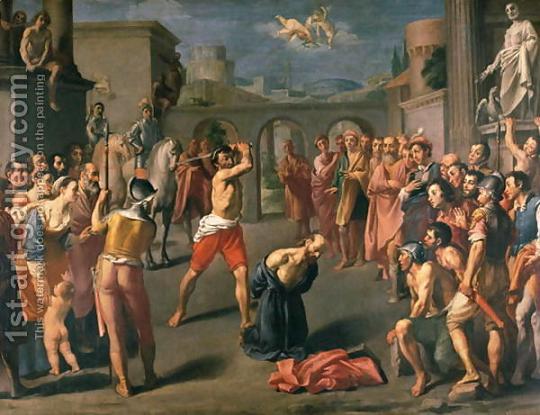
The Martyrdom of St Paul.

The Crucifixion of Christ.

Pilate washes his hands.
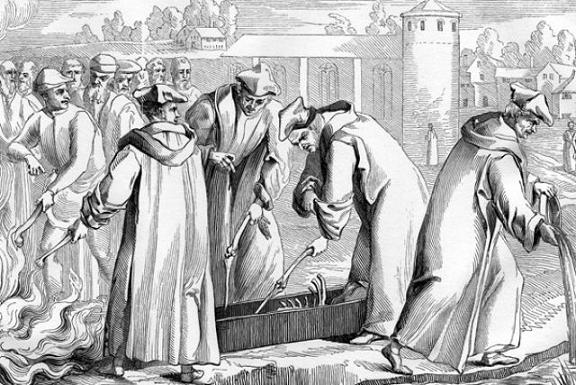
The Morning Star of the Reformation. John Wycliffe. Unfortunately for the Tyrannical Roman Cathocic church, Wycliffe died before they declared him to be a heretic and murder him…. so they dug up his bones and burned them!
I take the greatest pride that my sir name ‘Wikiriwhi’ is a transliteration of the Name Wycliffe.
It is a great honour to carry the name of the this Towering personality and Righteous Man deemed ‘A heretic’ by the despotic powers of his day.
Like Christ, I find it much more preferable to sit with the sinners and Infidels than with the ‘Whited sepulchres’ in their ‘High Seats’.
Christ considered the Hypocrisy, and Vain Self righteousness practised by the ‘Orthodoxy’ of his day to be the greatest Sins of All…. “Ye serpents, ye generation of vipers, how can ye escape the damnation of hell?”
That’s why they sought council as to how they might Kill Him.
Tim Wikiriwhi.
Christian Libertarian.
Read more…
Hell is for the Self Righteous, Heaven is for Sinners.
Why your kid doesn’t want to talk to you, and prefers to sleep on the streets.

My Last >Blog post< criticizing the Governments reversal on synthetic cannabis received a heated response from a fan of this latest Prohibition... someone who admits they could not be bothered to actually read my post...
She said ...
"bit long to read extensively but i gather your saying legal highs are fine and to test them on animals would be fine? have you used it yourself or been around others who are addicted to it, in the court news for flying off the handle, seeing young parents make it a priority rather than feed their kids and even allow them the luxury of wearing a nappy....what a load of bollocks. this shit is worse than p and has no right to be in this country. in fact i think it helps the argument for legalisation of cannabis. and since when is it LEGAL to get high..hypocrisy..."
End Quote.
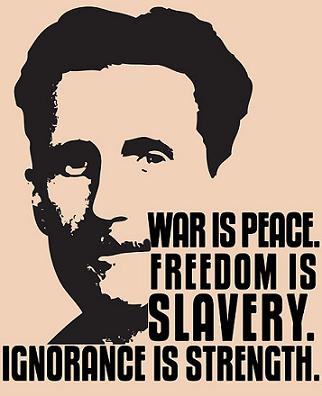
First things first….
I used to think that the best opinion pieces are short, yet it occurred to me while reading George Orwell, that The short opinion piece is not really of high educational value, and is in fact a product of a growing culture of Rush… and intellectual sloth… like druggies… looking for a ‘quick Hit.’
So I am not going to apologize any more to people who complain about the length of my spiels.
It’s not my problem that they cant be bothered investing the time and effort into reading my stuff.
Bugger them!
I think it’s *Extra Rich* for someone who has not bothered to read what I wrote, to then pass judgement on what I wrote!
Do you think me pedantic?
🙂
Having squared that I will now share with you my response to this woman’s criticism…. tweaked slightly to communicate with my readers rather than how it originally took aim at the silly twat herself.
(I got carried away again, and have actually added a substantial amount…. 🙂 )
Maybe I should not be so harsh…. maybe this silly Cow really is incapable of rational thought due to being absolutely consumed with ‘Righteous indignation’.
The thing is that I am so bloody sick and tired of such utter Bullshit…. stacked to the roof!
It’s typical of the Bat Shit Lunacy which was out Marching in the streets…. and given Prime time Air on Campbell live, and front page coverage on countless editions of News papers throughout the country… That I think it’s time to take the gloves off and rip into these Nasty little Morons in large numbers!
I probably have already lost 60% of my readers. Oh well.
She said Synthetic Cannabis is “Worse than P”.
I said I thought that she herself was unhinged, and asked if she was on Prescription medication?
(If not she should go see her Dr… Pronto.)
Not that I believe for a moment that P is as bad as Prohibitionists make out either!
I am merely calling her out for her wild *Highly emotive* exaggerations.
Prohibitionist civilians are predominantly throngs of mindless Zombies.
Incapable of being objective.
Notice the examples she sites as evidence that Synthetic Cannabis is Evil.
Prohibitionists always take the most pathetic people who have virtually *zero ethics* and zero self control, and who exceed recommended doses etc…. as being the poster child/ yardstick for measuring the drug… as if the Drunken bums who drink meths and sleep under bridges are the *standard* by which alcohol should be measured… instead of using the sensible hard working adults who enjoy a couple of beers after work… as their examples… and this is because they seek to delude themselves and everyone else that we need to model our society around the hapless Idiots and social misfits in our midst, rather than around sensible adults.
I make the point that there are plenty of people who smoke the legal high’s on a Friday night, Saturday… and don’t starve their kids or leave them without nappies.
By far the majority of drug users behave sensibly and don’t allow their indulgences to lead them to wreak and ruin… thus proving the notions of the the prohibitionists to be nothing more than an outrageous and un-objective Rantings.
Obviously there are *other factors* at play as to why *some few* people abuse the drugs, and live chaotic lives.
They have maturity problems.
They have a lack of ethics.
They have troubled lives and up bringing s.
*These are the types of real underlying issues that cause the problems!
Drug abuse is merely a symptom of Damaged personalities.
It has little at all to do with the Drugs themselve!
If anything These troubled souls are taking drugs to ‘self medicate’… to sooth their frayed nerves… to bring some pleasure into what is their Train wreak of a life.
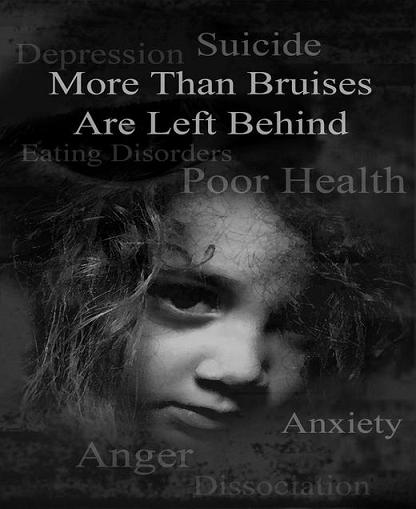
Yet the prohibitionist never wants to fully analyse the circumstances regarding why some people are really going of the rails…. because if they discover *other factors* are involved…. then they cant climb on their Prohibitionist hobby horse…. and man o man they love to flog that thing!
They say stuff like…
” My Boy was a wonderful young Lad… yet when he hit university he hooked up with a crowd of young hoodlums… and they led him down the Garden path… and he started doing Drugs!
Nek Minut… it was like he was a completely different person!
We couldn’t even talk any more… he was always high!
He would sneak out at night, and when he came home he would go straight to his room… and lock the door.
Whenever I tried to talk to him… he would just scream abuse!….”
“Yip! It was those Evil Drugs!
They turned him into a monster!…”
********************************

*This sort of crap really gets up my nose because of how it absolutely blames the young adult and the drugs for the break down in communication… and the swift change of the relationship… the distance and alienation.
Yes their Young adults have discovered and are experimenting with drugs!
They managed to do this *In spite of the tyrannical prohibitions* which threaten to destroy their lives should the Jackbooted police get wind of things.
*At least when drugs are legal they don’t have to face such heinous oppression from a hypocritical and bigoted society!
Some of them dont like getting high and move along… others really enjoy it…. and wake up to how They have been lied to their whole lives about how ‘evil’ drugs are.
They have an enlightenment… that Prohibition is Bogus!
That in reality it is the Laws of Prohibition which are shameful and wrong.
SORRY MUMMY! THE GAME IS UP! THEY KNOW THE TRUTH!
Then along comes Mom with her tired old bullshit screeching…
“Cannabis will kill you!”
“Not under my Roof!”
I’ll call the Police”
“Cannabis will put you in Jail”
Etc etc…. and you wonder why Johnny calls Mom a Stupid old Bitch and tells her to F- OFF!
He knows you are speaking from a position of complete ignorance.
Every world you say is Rubbish you have been fed by the Prohibitionist media and Draconian Police.
Do yourself a favour… climb down off your high horse…. and actually try informing yourself about what the other side of the Debate has to say for itself…
Oh…. so you say you do know!
You say that you smoked weed when you were at Uni!
Well then what the hell are you doing yelling at your own kids?
If you do know anything at all then you should know how much BULLSHIT you are spouting at your own kids.
Hypocrite
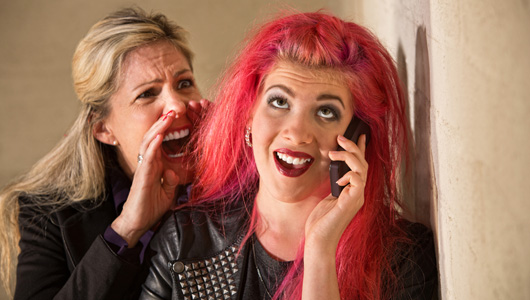
It never occurs to such ‘Parents’ that the reason why their Adult Kids prefer to get high with their mates and not talk to them any more is because they are so sick of their outrageous BULLSHIT!
It never occurs to them that it is their own fanatical Bigotry which has destroyed the relationship they had with their Young adults… and has alienated them!*
Ie the primary cause of the relationship breakdown is their own Anti-drug Mania!
Get That?

Some Parents have a real problem with their Kids growing up and making their own decisions.
Some parents seek to keep their kids under their thumbs, and loose their marbles when their now grown up kids refuse to simply do as they are told…
So they blame the drugs!
Hell may freeze over first yet if they want to restore their relationship with their Kids, they need to stop being such Tyrants.
They need to quit Rantings and Ravings like Muslim Fanatics!
No wonder your kids would rather sleep on the Streets… to get away from *YOU!
You can still voice your opinion and lay down rules of behaviour in your house, but wisdom dictates you should do so using tact… without acting like a psychopath.
You may say you love your kids but your actions make it almost impossible to love you back.
If you keep telling your sons and daughters that they are losers and are a disappointment… that can utterly crush their sense of self worth and push them into Gangs etc whom will welcome them with open arms.
In my opinion the very best Parents were the tolerant ones whom allowed their kids and their friends to quietly hang out in the Garage… rarely encroaching there themselves unless things were getting too rowdy, and that way they maintained a respectful relationship with their adult kids… did not drive them out of the home at a young age…. got to know and influence their friends… and always knew where their kids were at night… having given them somewhere safe to enjoy themselves.

When I speak of ‘Kids’ I am specifically referring to 18+… yet suggest you show understanding to your Kids even earlier than that… 15 years old We were driving Cars.
at 16 we were legal to have sex and had left school, and started apprenticeships…
And it is at this age that most young people will come into contact with Pot… even though it is illegal.
If you take a liberal approach you can still express your concerns yet do so in a loving manor, and demonstrate that you know they are growing up fast… and need some space to make their own choices.
Let them party in your garage… Friday through Sunday.
That’s my advise… and you will maintain a good relationship with them and will be able to indirectly exercise far more control, than if your kids choose to do there Friend thing somewhere else.
Prohibition does not Prevent young people from getting, experimenting, and enjoying drugs.
It merely means they may get them from ‘dodgy dealers’, and exposes them to the Hazard of having their Rights and liberties violated by Draconian Police… getting a criminal record which affects their future Job prospects and ends any hope of Overseas travel.

So For Goodness Sake why would any caring parent be happy that the Government has created more Laws which threaten to turn your Kids, your friends, and your neighbours into criminals and outcasts?
How can you celebrate that?
Why would you join Matches and lobby government to create more oppressive laws which will be turned against your own Children?
I can understand that a parent may be terrified that their Kids may get arrested, yet that is no excuse to employ Bully tactics against them, and call them losers, etc.
If anything this fear should motivate Moms and Dads to join organisations which call for an end to the war on drugs… to end the tyranny which threatens the well being of so many peaceful youth simply wanting to have a good time.
*What sort of Crime is that?*
*WAKE UP MOM!*
The War on Drugs is a greater threat to the well being of your Kids than Drugs are themselves!
Teach your Kids strong ethics and principles of self responsibility…. don’t neglect to instil good values and engage in character building … and simply rely on Legal prohibitions to keep your Kids safe!
It is their inner compass which they use to navigate themselves through life which is the vital component in living as a free adult in a world in which Drugs, Alcohol, Fast cars, fast woman, and other things exist which require proper ethics to contend with.
*GET A GRIP DADDY O!*
You cant wrap your kids up in cotton Wool.
You cant Ban everything.
Banning things doesn’t work!
Tim Wikiriwhi.
Christian Libertarian.
Cannabis: Better than legal highs but makes student “slower”
 I was at my kids school today and while I was waiting a couple of students were discussing their drug use. They indicated that they’d used legal highs but preferred cannabis. So I thought I’d ask a couple of questions…
I was at my kids school today and while I was waiting a couple of students were discussing their drug use. They indicated that they’d used legal highs but preferred cannabis. So I thought I’d ask a couple of questions…
Me: What do you think of “legal highs” being made illegal?
Student: [Shrugs shoulders] Don’t care. I’m smoking the real stuff now.
Me: Does that affect your schooling?
Student: Yeah. [chuckling] It makes me slower.
The other student didn’t speak to me but gestured that he agreed with his fellow student. He also chuckled when his friend admitted that cannabis made him slower.
Bear one another’s burdens
Galatians 6:2
Bear one another’s burdens, and so fulfill the law of Christ.
I’d like to help but I’m not sure how. So for now I guess I’ll just say be warm and well fed. 🙂
Let them eat worms
Behold the
fowls of the airbeneficiaries of welfare: for they sow not, neither do they reap, nor gather into barns; yet yourheavenly Fatherwelfare State feedeth them. Are ye not much better than they? (KJV)
Now, if I meant to sound particularly harsh, I’d add that
if any would not work, neither should he eat. (KJV)
But that was the instruction of the Apostle Paul to his brothers and sisters in Christ in the church of the Thessalonians. Whereas, the bread of life himself explicitly instructed us to give food to the hungry and also remarked that the poor we will always have with us. So, no excuses!
What about welfare state? The welfare state is the biggest excuse around for not giving food to the hungry! “It’s not my job, I pay my taxes, no one starves in New Zealand, we have government welfare handouts to which everyone is entitled in times of need …” No doubt, you’ve heard it all before.
Real Christian charitable giving has nothing to do with paying taxes to fund a welfare state. In his post on Real voluntary private Charity vs the evils of welfare and Political force my co-blogger Tim makes this point exceptionally well. I have little to add.
But I will say this much. It seems to me that the Bible implicitly instructs us not to fund the welfare state. Jesus famously told us to “render to Caesar [i.e., unto the government] the things that are Caesar’s.” (KJV) Does that mean that, to follow our Lord’s instruction, we should gladly pay our taxes? No, not at all! ‘Render’ means to give back. Give back to the government that which already belongs to the government. But what is that which already belongs to the government? Your hard-earned dollars? No, I don’t think so. I think your hard-earned dollars belong to you. And you must not give them under compulsion.
The Apostle Paul wrote
Each one must give as he has decided in his heart, not reluctantly or under compulsion, for God loves a cheerful giver. (ESV)
We are to give generously, not grudgingly. Any gift of ours is to be given
as a willing gift, not as an exaction. (ESV)
Furthermore, the Apostle Peter wrote
I exhort the elders among you, as a fellow elder and a witness of the sufferings of Christ, as well as a partaker in the glory that is going to be revealed: shepherd the flock of God that is among you, exercising oversight, not under compulsion, but willingly, as God would have you; not for shameful gain, but eagerly; not domineering over those in your charge, but being examples to the flock. (ESV)
We are to look after the sheeple not under compulsion, but willingly. And we are not to domineer over those in our charge. This brings me to a further and final point.
We are not to exact. Instead, we are to act. As examples.
Do not treat the poor and needy like trained circus seals! Do not seek to make welfare beneficiaries jump through hoops. Freely scatter your gifts to the poor! Dignity for dignity. (NIV)
Don’t be a Carol Gaither!
Dunne fails Drugs Test. Colin Espiner. Sunday Star Times. May 4 2014
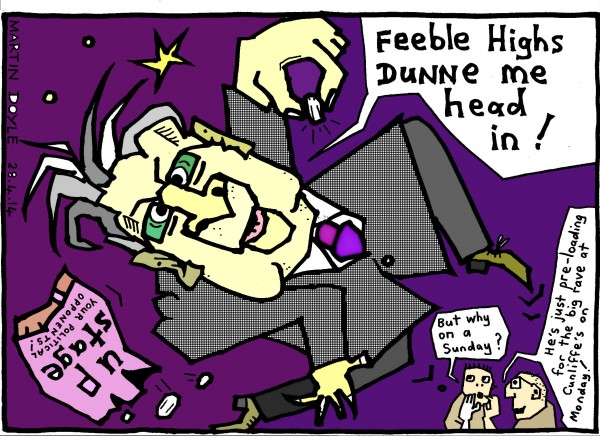
A very good commentary appeared in this weeks Sunday Star Times which articulates many of my own opinions regarding Peter Dunne’s/ The National Party collapse and back pedal regarding the PSA and banning all Synthetic Cannabis products.
This was Election year shystery on an almost unprecedented scale in recent memory… to the degree that it absolutely caught me off guard… so resolute were all voices, on all sides that the PSA was working and that Banning things was not the solution.
I heard these words directly from horses in both Major party Stables only a few weeks ago at the Hamilton contingent of the Anti-legal high rallies.
I should not have been so naive… Of course absolutely nothing is safe… nothing is absolutely ‘not for sale’ on election year, and the sensationalist socialist conservative media was having a field day with this hot potato… the likes of TV3’s John Campbell was relishing playing ‘Moral Cleric’ and inciting a Jihad on Legal highs with the most un-objective and grubby media sensationalism.
Silly me.
Labour’s barrel scraping leader David Cunliffe spotting an opportunity to score political points against National shamelessly and without regard for Justice or the Social costs,… without a scrap of objectivity or scientific vindication decided it was in Labours political best interest to reneg on their support for Peter Dunnes PSA… and I am sure many of Labours and Nationals own MPs were just as surprised as me at the swiftness of this reversal and re-posturing…. and greatly embarrassed by it as they had only weeks ago argued that the PSA was working and that ‘Banning stuff’ doesn’t work!
(Yet I dont expect their embarrassment lasted long, and has been overcome by the political gains their party made via this shysterism)
I also know that for none of them… esp not Peter Dunne… was the underlying ideas of establishing Legal alternatives to alcohol the real ambition of the PSA.
It was always primarily a tool whereby Parliament could Ban substances produced in synthetic Drug labs as they appeared on the shelves, and Dunne and co were always actively encouraging the State health system, etc to file negative and highly subjective reports about Legal highs to be used by parliament as vindications for manufacturing new legislative prohibitions.
Add to this that PM John Key has vetoed the use of animals for testing the safety of legal highs… while still allowing it on other products… just goes to show how shystery and duplicitous this whole Mickey Mouse PSA ‘Due precess’ really is.
The world was very interested in the Psychoactive Substances Act, and was hailing it as an enlightened alternative to the failing and oppressive prohibitions and the war on drugs…. expecting New Zealand to be one of the first western nations to have clinically tested and relatively safe legal recreational alternatives to alcohol.
Well Dunne failed the drug test! and what is most sad about it is that not only will this cause suffering to the industry, jobs, etc, and suffering to Recreational drug users whom must now return to the illicit black market… the ripples with travel about the globe because the truth about how this attempt at establishing a legitimate/ Legal high market was torpedoed… by posturing spineless Politicians who put their own self-interest on an election year…ahead of justice and Social well being …will be buried, and instead the notion will be that ‘Synthetic cannabis was found to cause great social chaos in New Zealand’…. therefore attempts in other nations by reformers to mitigate the War on drugs and to set up a regulatory system which allows relatively safe alternatives to alcohol… like Synthetic cannabis will meet a strengthened Anti-drug resistance armed with the False Data from this outward looking New Zealand legislative failure.
I also think that this reversal has set back any hope of the legalisation of cannabis because these moves have Revitalised the Prohibitionists, whom were beginning to falter…. and so I shake my head and sigh that so many Activists who seek an end to the War on cannabis, had so little foresight, so little moral integrity as to buy into all the Anti-legal high hype, and jump onto the Prohibitionist wagon and join the throng calling to Ban synthetic cannabis.
Many did so wilfully refusing to apply their first hand knowledge about how prohibitions are fuelled by irrational exaggerations, un-objectivity, lies, and ignorant fears… ie “Reefer Madness”, etc.
They did so in pure hypocrisy, out of an unprincipled and devious belief that some how the more they incited terror against synthetic cannabis… and hyped up just how evil society imagined these products were… that somehow this would make cannabis appear much more ‘acceptable’.
I think they have mis-calculated badly…. even though in New Zealand we can expect the entire future conversation of the Cannabis reform movement to have shifted away from Cannabis use being a rightful liberty and being safer than alcohol, to now a call for an end to cannabis prohibition by primarily using this newly manufactured mania against synthetics… as a lever… as a threat…even though the perceived Dangers synthetics poses to the public is largely founded upon lies.
For me it is shameful to try and capitalise off the oppression of another unpopular minority for the sake of your own advantage.
I refuse to be party to it.
These events clearly demonstrate just how exposed life and liberty is to the Machiavellian whiles of Party Politics in New Zealand because we have no constitutional protection against power lusting Demagogues who put their own interests ahead of Rights, Liberties, Justice, and Social well-being.
We are utterly expose to the winds of Media manufactured terror.
The survival of PSA was a house of cards…. relying solely on the maintenance of the cross-party consensus as to its pragmatic value and Users and distributors were fed to the hounds as soon as one party blinked.
The ultimate travesty will be that inspite of Cunliffe/ Key systerism Re The PSA Labour will fail to get elected and so the rights and well being of the Users and distributors will have been sacrificed for nought!
And the collapse demonstrated just how full of unscrupulous Bastards our parliament is peopled with.
If we had a just Libertarian Constitution, virtually none of them could function.
All their Legal mumbo jumbo would be binned.
They would be like Evil witches with their wands taken away!
Ironically One party did maintain themselves and refused to back the new changes (passed though the house tonight).
The Greens.
They refused to be swayed, saying they believed the perceived dangers driving the prohibitions were exaggerations and that in reality the PSA had been working!
Is it a Blue Moon?
I find myself Saluting the Greens!
Well done!
Tim Wikiriwhi
Christian Libertarian.


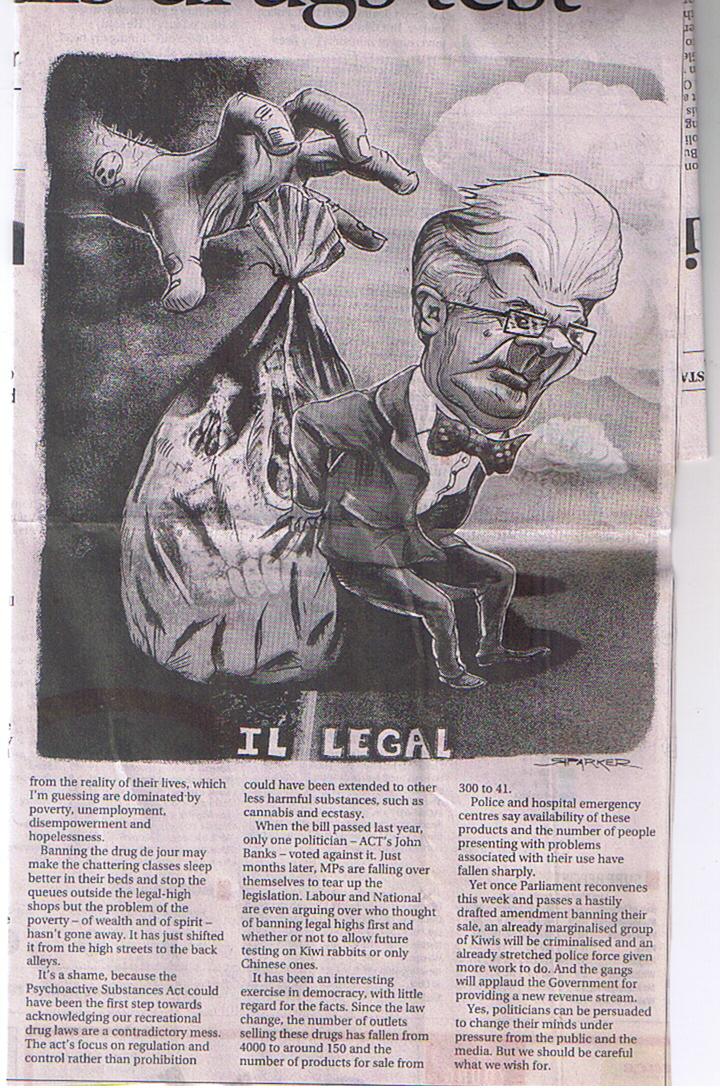
I dont know why I could not find this article on the net when there is what I thought was a full copy of this Sunday Star Times edition >>>Here<<<<... yet this opinion piece is strangely missing?
I found this omission 'Odd'... yet I am no expert at these matters... what can be inferred from such omissions?
Obviously not a Full E-copy.
I am keen to discuss this article with readers and Reformers, and I think it is important that foreign researchers on this debate can gain reference from it as an independent commentary.
I have made attempts to contact the author via Facebook.
Teachers are fucking sickos – English “education” is shit
Yesterday my youngest son’s English class was given a book to read – White Ute Dreaming by Scot Gardner. My son is 14 and he is in year 10, he showed me and his mother the book and told us that he didn’t expect parents would approve of them reading it. I read enough of the book (the first page and half of the second) to decide that my son is not allowed to read it.
A teacher’s Guide for how to use this book in class is available online. Here’s a few excerpts for the Teacher’s Guide:-
THEME 6.
SEXUALITY – INFIDELITY, FIRST SEX, SEX AND LOVE, PERVING, HOMO SEXUALITY
Wayne is a sexual being and confused about the relationship between love and sex (p4, p130, p209).
p4 “…I wish she’d grab hold of me like when we were at the beach. Mate that was hot. And wet…Pashing with Kez was bliss. There wasn’t much risk of me bursting. That’s why God invented hands…”
p130 “…my dick wants one thing and my head has its doubts…”
Wayne decides not to have sex with Angie (p126).
He wants his “first root [to] be something special”.
Wayne cops an eyeful of Angie (p58).
Hendo is missing the ‘politeness gene’(p99).
p99 “… he’ll just stare at her tits… don’t get me wrong, I like eye-lollies too, but Hendo missed out on the politeness gene.”
Den comes out (pp181-183).
p182 “He’s a fucking poo jabber…’…how do you know you’re a poofter if you haven’t rooted anyone up the arse?’…”
Higgins (the old bloke) watches the Humes through their windows (p172).
p172 “… Fucking sicko…”
THEME 5.
FAMILY – BUSTED FAMILIES, FAMILY RULES, HAVING THINGS IN COMMON WITH YOUR PARENTS
1. What is it that Sylvia (Wayne’s mum) finds that confirms her opinion that Wayne and his dad are alike?
A condom.
2. Why does Wayne get grounded?
For smoking dope…
THEME 6.
SEXUALITY – INFIDELITY, FIRST SEX, SEX AND LOVE, PERVING, HOMOSEXUALITY
1.How did David Longmore get his nickname?
They called him ‘David Longdick’ after he was sprung playing with himself at school.
2.Where did Wayne find the stash of Penthouse magazines?
In his Uncle Don’s shed.
3. What happened between Kerry and the guy at her new school, Aaron?
They met at a party and it was a bit of a set-up. They kissed. He put his hand up her shirt. She thought she was going to chuck. She phoned her mum and went home.
THEME 7.
SADNESS – ANGER, FEAR, DEPRESSION, SUICIDE
1. How was Wayne intending to kill himself?
He was going to hang himself in the
cupboard…
WHAT DO YOU THINK?
Have you ever thought of suicide? Why?
Why not?
What’s one thing that gives you reason to live?
What makes you angry?
Teachers forcibly exposing children to this shit makes me angry.
** UPDATE ** My son’s class will not have to read this book anymore thanks to the school management. Senior management have said that it’s a totally inappropriate text for students of that age.
Mankind is on the verge of creating Sentient artificial intelligence? BULLSHIT!

It amazes me just how ridiculous are the myths of Materialism!
That all life forms are the result of mindless accidents.
That ‘unguided’ evolution can change a worm into a human with the ‘magic wand’ of time.
Etc Etc.
And this fundamental superstition of Materialist Naturalism has multitudes of whacky spin-offs… one being that Human consciousness is simply a product of a complex arrangement of atoms.
Following this rationale we end up with Sci-fi movies like the Terminator, whereby Machines have become self aware and decide that Humanity needs to be eradicated.
Now while I like a good sci-fi movie, It is tragic that the computing scientific community have been making such bold claims that they are on the verge of creating Humanoid Artificial intelligence, and are proposing such absurd moral dilemmas as granting their created so-called smart machines ‘Rights’!
Check out this link >>>> ARTIFICIAL INTELLIGENCE is already here. But how will the singularity, or the point at which machines achieve sentience be received by humanity?
How they can say such things with a straight face…. and why legions of otherwise intelligent people actually believe these are serious Moral questions which are eminent is a testimony to just how unfathomably deep their faith in Materialism really is!
They seem to accept the Idea that consciousness is merely a product of material complexity as axiomatic… only questioned by religious nutters who cling to primitive notions of a Super-natural reality.
Forget the fact that the latest scientific discoveries in Physics actually proves that our universe is not absolute, but finite, and that therefore a more primary reality *must exist*, and from which our universe was caused.
And the latest discoveries in scientific understanding of the Brain is also rendering Atheist materialism more and more absurd…. and exploding any delusions that Humanity is about to create sentient computer-beings.
Read the following….
Human brain has more switches than all computers on Earth.
Researchers at Stanford develop a new imaging method that enables visualization in unprecedented detail of the myriad connections between nerve cells in the brain.
The human brain is truly awesome.
A typical, healthy one houses some 200 billion nerve cells, which are connected to one another via hundreds of trillions of synapses. Each synapse functions like a microprocessor, and tens of thousands of them can connect a single neuron to other nerve cells. In the cerebral cortex alone, there are roughly 125 trillion synapses, which is about how many stars fill 1,500 Milky Way galaxies.
These synapses are, of course, so tiny (less than a thousandth of a millimeter in diameter) that humans haven’t been able to see with great clarity what exactly they do and how, beyond knowing that their numbers vary over time. That is until now.
Researchers at the Stanford University School of Medicine have spent the past few years engineering a new imaging model, which they call array tomography, in conjunction with novel computational software, to stitch together image slices into a three-dimensional image that can be rotated, penetrated and navigated. Their work appears in the journal Neuron this week.
To test their model, the team took tissue samples from a mouse whose brain had been bioengineered to make larger neurons in the cerebral cortex express a fluorescent protein (found in jellyfish), making them glow yellow-green. Because of this glow, the researchers were able to see synapses against the background of neurons.
They found that the brain’s complexity is beyond anything they’d imagined, almost to the point of being beyond belief, says Stephen Smith, a professor of molecular and cellular physiology and senior author of the paper describing the study:
One synapse, by itself, is more like a microprocessor–with both memory-storage and information-processing elements–than a mere on/off switch. In fact, one synapse may contain on the order of 1,000 molecular-scale switches. A single human brain has more switches than all the computers and routers and Internet connections on Earth.
Read more >>>Here<<<
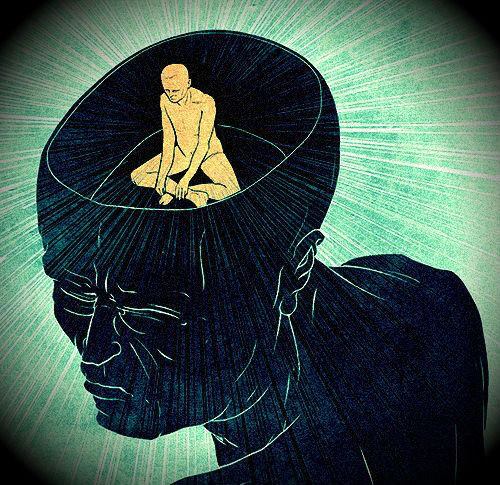
You would think that this *unbelievable complexity* would be the Death Nell for Atheism and the theory of Evolution… yet of course it’s not because These superstitions are not Objectively held beliefs…. not founded at all upon science but upon the unfounded and now thoroughly archaic dogmas of Materialist Naturalism.
Thus they are impervious to such discoveries.
All their claims to being empirical and scientific being absolute Bunk…. a great lie designed to fool the masses into believing that Theism is anti-science.
Well The Brain is infinitely more complex than any AI experiments which are going on… to get anywhere near their goal would take all the computing power in all the world!
And even then you still have the problem of drawing consciousness out of a stone!
No own would suggest that the Internet is a conscious entity even though it is connected to hundreds of millions of computers… yet that is exactly what the Materialist dogma believes about consciousness…
To the Monist materialist Free will must be illusory… and that is their answer to every reality which does not fit into their Naturalistic Paradigm.
Thus they are trapped in prison of their own device.
They are so naive as to claim that belief in anything which stands outside the reaches of science is superstition, when in reality to be so gullible as to believe all reality must fall within the scope of science is childish in the extreme… it’s patent stupidity!

Thus the more I contemplate the ideas and beliefs on which atheism is founded the more I marvel at how silly it really is.
I know that really most people choose to be atheists because they absolutely hate the Idea that there might be a God who will one day judge them for how they lived their lives.
As A Bible believing Christian Science is my best friend!
It becomes easier to believe in God by the Day.
My explanatory power of my Dualistic Cosmology increases and is strengthened… The Gap of the Atheist is shrinking to an infinitesimal point.
The Fool hath said in his heart there is no God!
I wish I knew how to present these truths in a less confrontational manner.
I worry that instead of appreciating my honesty, many of my Atheist readers will harden their hearts… because they dont like being called Idiots.
The thing is that I sincerely seek to wake people up to the gigantic scam which has been perpetrated in the name of science and reason!
And that the most foolish thing to do is stubbornly maintain such a delusional belief system… out of sheer Vanity.
The Smartest thing to do is to abandon the lie and embrace the truth…. no matter how hard that is to do, no matter how your friends and family will react to your ‘conversion’.
Yes the world system is designed to persecute anyone brave enough to step out of line.
Yet let me tell you that following the truth is the most rewarding thing you can ever do!
The Truth is that Life does have Meaning, and value, and purpose!
There is Hope!
morality is Real!
etc etc.
And the Greatest truth of them all is that Jesus Christ really is the Son of God, and that he has already provided the way to be saved and restored to fellowship with God our Father… and that Salvation is Free!
My testimony has been to set an example that Christianity is not a form of slavery… but liberation!
God does not want you to become a fake…
He wants you to be an honest and trusting person living under his grace.
Becoming a Christian is a walk with God in which you do transform… into a better and better *You*.
God created us all unique for his purposes.
He dose not want a bunch of card board cut-out Robots.
He wants you to reach your full potential and to ‘shine as a light in the darkness’…
Click>>> The Gospel of God’s Grace.
Tim Wikiriwhi
Protestant, 1611 King James Bible believer, Dispensationalist, Libertarian
Read More From Me…. Science goes Ga Ga! The Spirit Temple-Material Interface. The Human Brain.
Nyctophilia: Hiding in the Dark….
The Rusty Cage: Scientism…
Pasteur’s Law, Creation Science vs Nose Bone Atheism.
Monism: Evolutionary Psychology and the Death of Morality, Reason and Freewill.
Poster child for Atheism…Hannibal Lecter.
Biomimicry… Plagiarizing God’s designs.
The False Deity Called Evolution.
Planet of the Apes…whateva. 1Tim6vs20
Faith, Science, and Reason. The Pomposity of Atheism.
The Ludicrous Claims of Evolution! Why not ESP?
Russell’s Teapot really refutes Atheism not Theism!
Atheism has no basis for Rights… or Morals.

